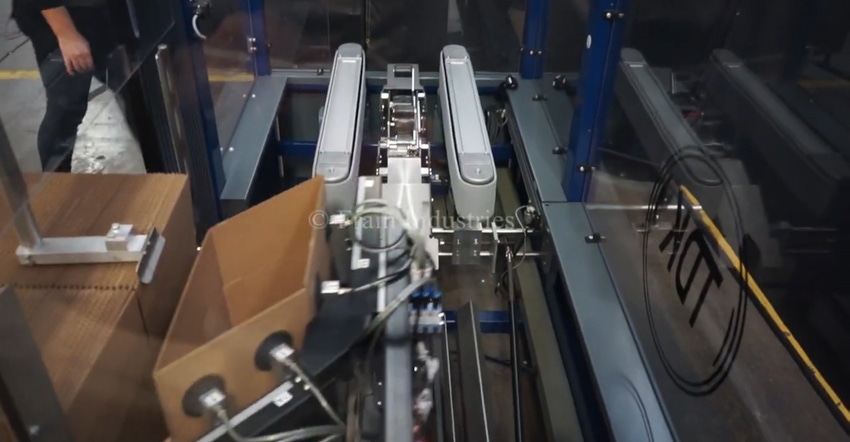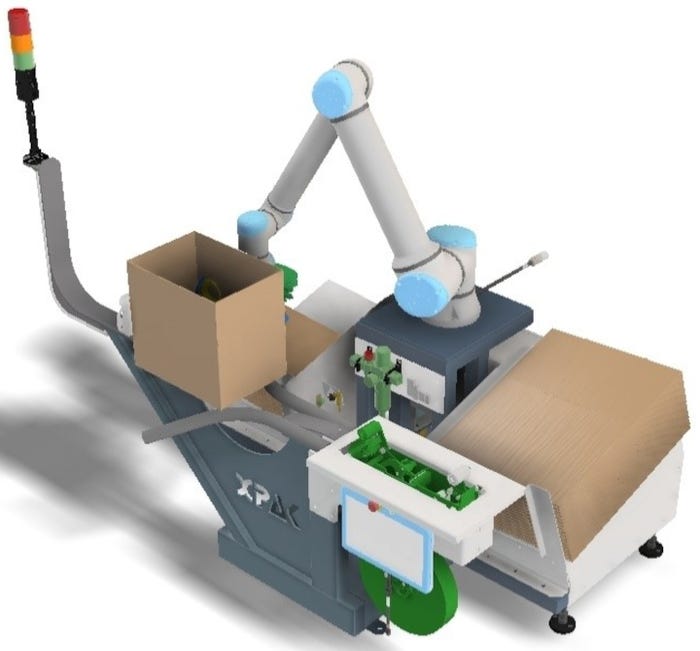How to Erect Corrugated Cases for Product Loading
Learning the correct operation of a case erector can help you prevent or troubleshoot jams or faults.
July 26, 2023

Corrugated cases come in many styles. Most common is the Regular Slotted Container (RSC). These are supplied in blanks, ready to be erected and filled manually or by machine.
A case blank is a box that is die-cut to its size and shape, glued at its vertical seam only, then folded, knocked down, and stacked. A case blank is also known as a knocked-down case.
This is different from a flat corrugated sheet that is die-cut to the case size and shape, but not glued at all. These case “flats” are then wrapped around collated products and sealed as that happens. We will not be talking about wraparound case erectors in this article — just erectors that handle case blanks.
Erectors for case blanks can combine top and bottom sealing as well loading. These are actually separate operations from erection and will be discussed in future columns.
Case blanks are loaded into a magazine or chute, which presents case blanks to the erecting mechanism. Some low-speed erectors — operating at two to six cases per minute — simply pull the blank from the magazine into guides that ease it open. The guides assure that the case edges are square.
The case forms a tube, open on top and bottom. It may be presented vertically or horizontally depending on the erector and packer designs. Major flaps on a case (those that meet in the center) are normally parallel to flow as the case moves out of the erection station. As it moves, a stationary guide pushes the leading minor flap closed. A powered “kicker” pushes the trailing minor flap closed. Stationary guides fold the major flaps closed.
Bottom sealing — with glue, tape, or staples — can take place before or after case loading. Leaving the flaps loosely open during loading can facilitate loading of tightly fitting products like folding cartons.
Collaborative robots are being used more and more to replace purpose-built case erectors. Some applications use multiple case magazines to allow random size cases to be erected sequentially. The system shown includes a bottom tape sealer.

Higher speed erectors use suction cups on both sides for more positive opening. Excess glue at the converter can glue a case blank together. At higher speeds a case blank that won’t open can cause a serious stoppage or even damage. Suction grippers on both sides avoid this problem. The knocked down (KD) case is positively pulled open even if there is internal glue.

It's easy when you know.
Find out more about case erectors, packers and sealers. It’s all in Chapter 9 of john Henry’s Packaging Machinery Handbook. Other chapters cover inspection, flexible packaging, coding and all commonly used packaging machinery. The complete table of contents and chapter samples can be found at http://www.packmachbook.com/handbooksample.pdf.
Purchase the Handbook on Amazon at https://amzn.to/3kr4qj7.
Known as the Changeover Wizard, John R. Henry is the owner of Changeover.com, a consulting firm that helps companies find and fix the causes of inefficiencies in their packaging operations. He has written the book, literally, on packaging machinery (www.packmachbook.com) and is the face and personality behind packaging detective KC Boxbottom, the main character in popular articles on the Packaging Digest website. He can be contacted at [email protected].
About the Author(s)
You May Also Like


